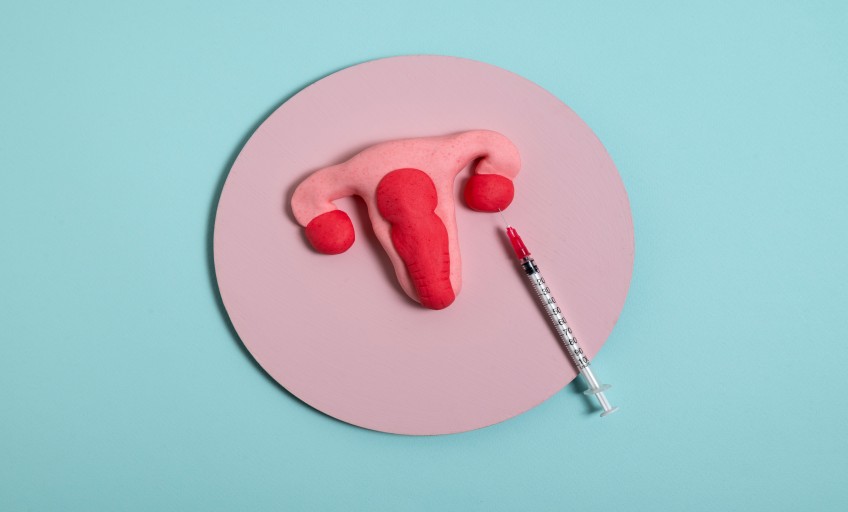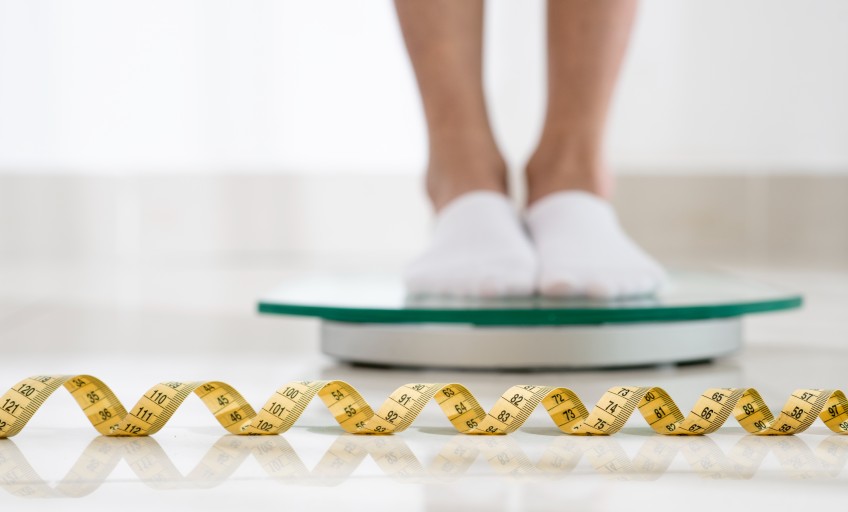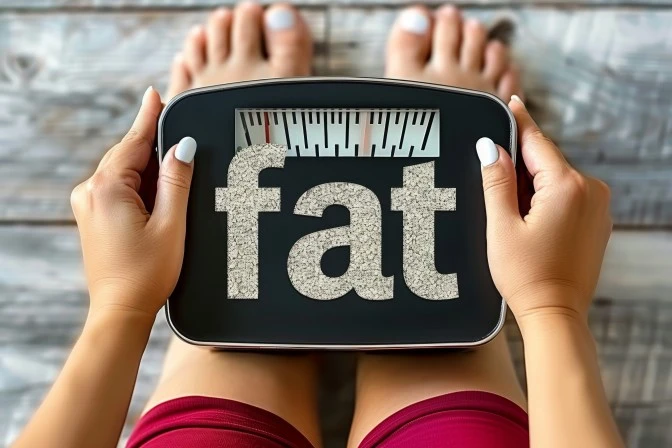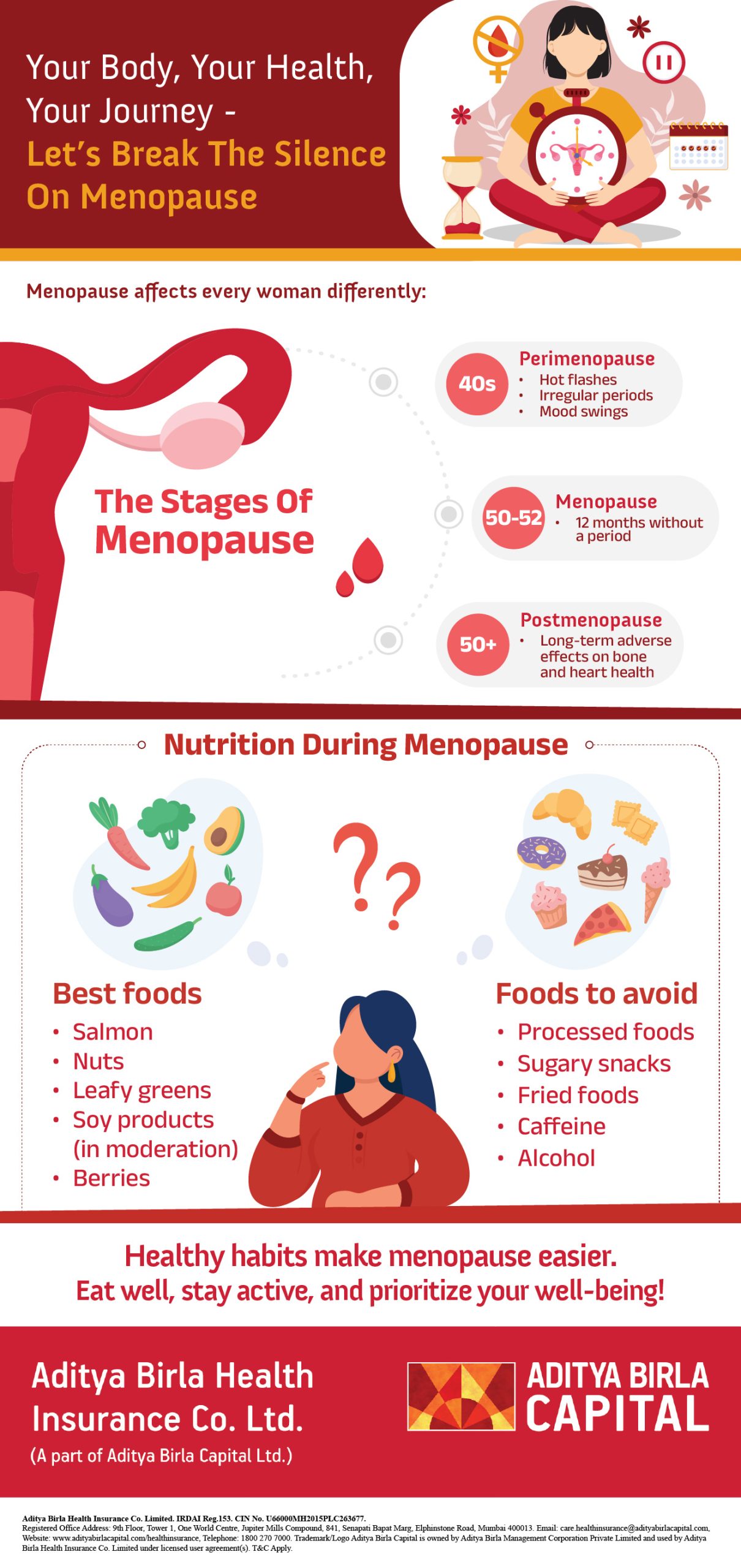
Menstruation symptoms, like bloating, cramps, and mood swings, can be unpleasant to experience. Menopause occurs when menstruation stops, which can also strain a woman’s body and mind. In India, the average age for menopause is 47.5 वर्ष. With the right strategies and help, you can effectively manage menopause and its symptoms.
Understanding menopause
Menopause is when periods stop in your 40s or 50s. It is diagnosed after 12 months without a menstrual period, vaginal bleeding or spotting. It is a natural part of aging and marks the end of your reproductive years.
The menopausal transition
Perimenopause, or the menopause transition, can start eight to ten years before menopause when the ovaries gradually produce less estrogen. You can be perimenopausal for several months or years. Many begin feeling symptoms like irregular periods, hot flashes and mood swings in perimenopause.
Common menopausal symptoms
You may be menopausal if you experience some or all of the following symptoms:
Hot flashes and night sweats
Hot flashes are sudden, warm sensations that spread over the body. They feel like a sudden flare-up of heat, paired with sweating and flushed skin. On the other hand, cold flashes or night sweats are drenching sweats that soak through your clothes and bedding and disturb your sleep. Both hot flashes and night sweats often accompany menopause.
Vaginal dryness and discomfort
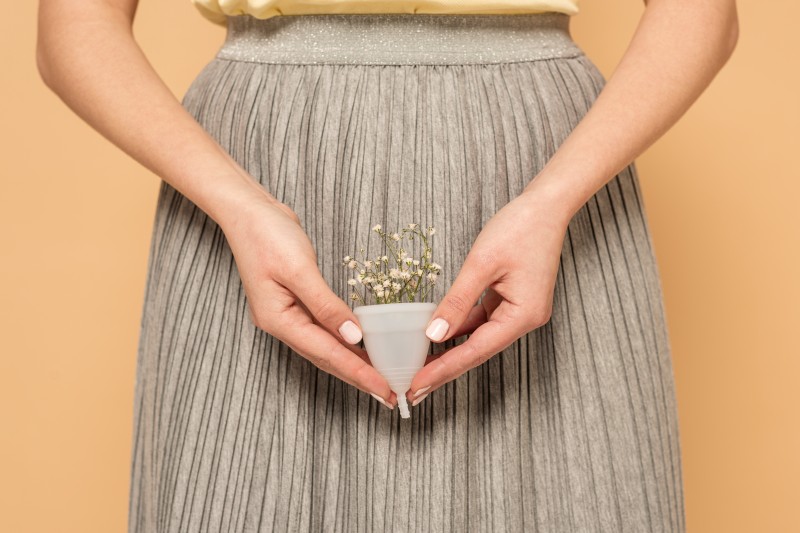
Typically, your vaginal lining is lubricated with fluid that helps keep it thick and elastic. Vaginal dryness affects one’s quality of life negatively. It causes pain during sitting, exercising, peeing and sexual intercourse when the tissues in your vagina are dry, thin and not well-moisturized. This leads to discomfort, especially during sex. It is most common during or after menopause when estrogen levels decline.
Mood swings and emotional changes
You may also experience emotional changes like irritability, मूड में बदलाव or depression accompanying menopause. You may have a persistent sadness and lack of interest in things and activities you once enjoyed. You may also face difficulty thinking, remembering, eating, and sleeping.
Lifestyle strategies for managing menopause
Adopt the following lifestyle strategies for effective menopause management.
Diet and nutrition
It is vital to get a wide variety of essential nutrients from food. Eating a संतुलित आहार can boost one’s overall well-being. Research suggests that omega-3 fatty acids help improve night sweats.
Calcium and Vitamin D for bone health
Women are significantly more prone to develop osteoporosis (a bone disease that develops when bone mineral density and mass reduce or when the bone quality or structure changes) during menopause because of the sharp decline in estrogen levels. Calcium, vitamin D, and magnesium help reduce the risk and improve bone health.
Plant-based estrogens
Soy may help reduce the hot flashes and night sweats that many women experience during menopause. Flaxseeds contain potent phytoestrogens called lignans, which scientists believe are responsible for improving menopausal symptoms.
Hydration and limiting alcohol
Drink a glass of cold water or fruit juice at the beginning of a hot flash to relieve symptoms. Also, avoid drinking alcohol, which can affect menopause symptoms negatively.
एक्सरसाइज़
Exercise helps strengthen your body, boosts overall well-being, and manages weight. It can be difficult if you are dealing with hot flashes, but it can help relieve several other symptoms of menopause. Any physical activity, even gardening or swimming laps in a pool, is good for you.
Regular physical activity
Get at least two and a half hours of moderate exercise and two weekly strength training sessions. Include cardio exercises like brisk walking, running, swimming, cycling, playing tennis or skipping rope. Strength training increases strength by making muscles work against a weight or force. Different forms include using free weights, weight machines, resistance bands and your body weight.
Benefits for mood, bone health, and weight management
- Exercise benefits mood by releasing endorphins, the body’s natural feel-good chemicals that alleviate stress and depression.
- It stimulates bone density through weight-bearing activities, improving bone health.
- It burns calories and increases metabolism, which aids weight management.
Stress management techniques:
Mitigating stress through the following methods can be a crucial step in navigating menopause symptoms:
Yoga, meditation, and deep breathing exercises
Calm, tranquil movements like yoga can also help with mood and relieve anxiety. To manage stress, adopt a yoga or meditation practise. A few deep breathing exercises to manage emotions as they arise throughout the day include:
- Box breathing: Inhale slowly to a count of four, hold your breath for four, exhale slowly to a count of four, and then hold your breath again for four.
- Belly breathing: Inhale through your nose, feeling your belly expand, and then exhale slowly through your mouth.
- Alternate nostril breathing: It can help balance your nervous system and lower your blood pressure.
Mindfulness and relaxation techniques
Practise progressive muscle relaxation, guided imagery, body scans, and tai chi. Focus on becoming aware of your body sensations and releasing tension while staying present. These practises can help alleviate hot flashes, mood swings, sleep disturbances, and overall stress associated with menopause.
Medical treatments for menopausal symptoms

The main types of treatments for menopause management are as follows:
Hormone Replacement Therapy (HRT):
The body undergoes significant hormone changes during menopause, decreasing its hormone production. When the ovaries no longer produce enough estrogen and progesterone, hormone therapy can replace the lost hormones.
- Hormone therapy improves your hormone levels.
- It helps with symptoms like hot flashes and vaginal dryness.
- It can also help prevent osteoporosis.
However, hormone therapy also has risks. Talk to your doctor about the risks and benefits and whether hormone therapy is an option for you based on your health history, age and other factors.
Types of HRT
There are two main types of hormone therapy:
- Estrogen therapy (ET): You take estrogen in the form of a patch, pill, cream, vaginal ring, gel or spray. Estrogen therapy cannot be used alone (without a progestogen) if you still have a uterus.
- Estrogen-progestogen therapy (EPT): Also known as combination therapy, it uses estrogen doses and a hormone similar to progesterone. This hormone therapy is for women who still have their uteruses. Progesterone can be in its natural form or the synthetic form, progestin. Progestogen is a generic name for treatments that include natural progesterone and synthetic progestins.
Non-hormonal medications:
You can get non-hormonal prescriptions from your healthcare provider that improve menopause symptoms.
Selective Serotonin Reuptake Inhibitors (SSRIs) for hot flashes
Selective Serotonin Reuptake Inhibitors (SSRIs) manage symptoms like mood swings and hot flashes. SSRIs increase serotonin levels in your brain. Serotonin is a neurotransmitter that is important in regulating mood, appetite, sleep, memory, social behavior, and sexual desire.
Menopause can be challenging, but it can be effectively managed with the methods mentioned above. Remember that menopause is not an end but a new beginning to be embraced. Take charge of your journey and prioritize your well-being for a healthier, happier life ahead.
Key Takeaways
- Menopause occurs in the 40s or 50s when a woman goes without a period for a year.
- Menopausal symptoms are hot flashes, vaginal dryness, and mood swings.
- Eat healthy, exercise regularly, hydrate adequately, avoid alcohol, practise meditation and mindfulness for effective menopause management.
- Non-hormonal medicines, ET and EPT (two types of HRTs) treat menopause.
Stay tuned to the Activ Living Community. Keep up to date with the latest health tips and trends through expert videos, podcasts, articles, and much more on पोषण, फिटनेस, सचेतन, और लाइफस्टाइल से जुड़ी बीमारियां like Asthma, Blood Pressure, Cholesterol, and Diabetes. Activ Living ke saath sahi sehat ki shuruat ABHI karo.
You may also be interested in the following blogs:
- Say Goodbye To Perimenopause Woes With These 3 Innovative Treatments
- Lifestyle Changes To Help With Impact Of Diabetes And Periods
Popular Searches
How to lower blood pressure | Fruits good for liver | Unhealthy foods | रागी के लाभ | बेसल मेटाबोलिक रेट | हाई ब्लड प्रेशर के लिए एक्यूप्रेशर पॉइंट्स | Ayurvedic medicine for blood pressure | How to control cholesterol at home | Homeopathy for Asthma | Biological Age | Home remedies for TB | Natural beta blockers | Negative effects of internet | Types of walking | ब्लड प्रेशर कैलकुलेटर | ब्लड शुगर कैलकुलेटर | BMI कैलकुलेटर





 1800-270-7000
1800-270-7000

